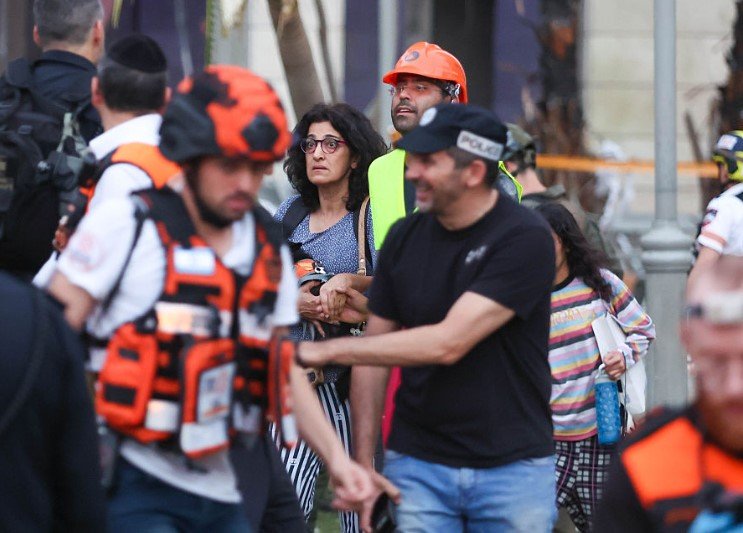Evacuated via Armenia, the group was safely airlifted to Delhi as tensions between Israel and Iran spiral
A special flight carrying more than 100 Indian students, who were evacuated from war-struck Tehran to neighboring Armenia, landed in Delhi this week. It marks one of the latest civilian extractions coordinated by the Indian government amid the growing hostilities in the Middle East.
The evacuation comes on the heels of intensified conflict between Israel and Iran that has left thousands of Indians in the region anxious. With missiles flying and embassies on high alert, 110 students crossed Iran’s western border into Armenia before being flown to India.
A tense wait, a silent retreat
These weren’t just any travelers. Most were medical and engineering students—young, wide-eyed Indians pursuing dreams in Iranian universities. They had little idea that they’d be walking into an unfolding crisis when they enrolled.
As air raid sirens blared over Tehran earlier this month, the fear on the ground became palpable. Calls from home turned frantic. Social media feeds filled with unverified videos of explosions, black smoke, and emergency sirens.
“It was like something out of a war movie,” said one of the evacuated students who requested anonymity. “We were scared out of our minds. No one knew what would happen next.”

Then came the green signal from Indian officials stationed at the Embassy in Tehran. Students were to pack light and prepare to move—quietly and quickly. Not by air, but by road.
From Tehran to Yerevan — the safer route out
Moving students out of a hot conflict zone by land isn’t simple. Iran shares its western border with Armenia, and this corridor was used as the emergency exit path. Escorted in small groups under coordination from embassy teams, the students made the 600+ km trip northwards to safety.
The Ministry of External Affairs (MEA) in New Delhi later confirmed the route and said it was chosen “based on current geopolitical conditions and security assessments on the ground.”
A source involved in the logistics added, “The airspace over much of Iran was restricted or risky. Moving them to Armenia was the safest bet.”
It wasn’t easy, though. Some students were reportedly held at temporary checkpoints. A few lost their mobile networks for hours. Yet, the group eventually made it to Yerevan, Armenia’s capital, where a special aircraft was arranged to bring them home.
Families relieved, but the fear lingers
Back in India, the tension had been building for days. WhatsApp video calls were short and glitchy. News headlines didn’t help. Each image of missile strikes brought a fresh wave of panic to families.
“My daughter said she couldn’t sleep for three days straight,” said Pradeep Sharma, father of a 2nd-year pharmacy student from Jaipur. “We just kept praying she’d be okay.”
For families in Delhi, Chennai, Kochi, and Patna—some of the cities students hailed from—the sight of their children walking out of Indira Gandhi International Airport, albeit tired and shaken, was all they’d hoped for.
-
Over 100 Indian students were evacuated
-
Evacuation route: Tehran → Armenia (by road) → Delhi (by air)
-
Most students were enrolled in medicine and engineering courses
Coordinated effort behind the scenes
This extraction wasn’t a spur-of-the-moment decision. According to officials, plans had been drafted weeks ago as signs of conflict escalation grew.
Here’s a snapshot of what went into making it happen:
| Phase | Description |
|---|---|
| Risk Assessment | MEA monitored Israeli-Iranian tensions since May |
| Student Registration | Embassy created list of vulnerable Indian nationals |
| Evacuation Logistics | Ground movement to Armenia coordinated in batches |
| Flight Arrangement | Chartered return flight managed by Indian authorities |
MEA spokesperson Randhir Jaiswal stated, “We’ve been in constant touch with our nationals. Ensuring their safety is our highest priority. This was a well-planned and swift operation.”
No one left behind, officials assure
Not all Indian students have returned though. According to the Indian Embassy in Tehran, over 1,000 Indian nationals remain in Iran, including professionals, students, and pilgrims. The government has confirmed that additional extraction plans are on standby if the situation worsens.
For now, Indian missions in both Tehran and Yerevan are operating in tandem, tracking movement, issuing advisories, and maintaining contact with those still on Iranian soil.
One embassy official, who did not want to be named, said, “We are watching everything. If we see red flags again, we’ll act. Fast.”
Middle East tension: India’s broader concern
While the return of these students brings relief, there’s no denying the bigger picture. The Israel-Iran standoff has opened a can of worms in a region that’s home to millions of Indians—workers, students, and pilgrims alike.
India imports a big chunk of its oil from this region. Any escalation could send global crude prices soaring. It’s not just about safety—it’s about economic fallout too.
MEA’s recent statements have tried to walk a diplomatic tightrope. India has called for “maximum restraint” and emphasized peace. Yet, it has not directly named either side, staying neutral, as it often does in West Asia conflicts.
One senior analyst in New Delhi put it bluntly: “India needs Iran and Israel both. This is tricky diplomatic terrain.”
